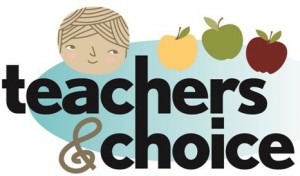Editor’s note: This article originally ran in Education Week. Tuthill is the president of Step Up For Students, which co-hosts this blog.
With her recent passing, Marva Collins is being remembered for her glorious educational crusade to turn around the lives of low-income black children in Chicago. It’s also worth remembering how she chose to do this. She cashed in her teacher-pension savings in the 1970s to start her own private school. With it, she combined a no-excuses attitude with high standards, strict discipline, and love—and got amazing results with limited resources.
In other words, Collins was empowered by school choice.
 Twenty-five years after Milwaukee put private school vouchers on the map, a majority of states now have some form of private school choice. Just this year, Arkansas created its first voucher program, and Indiana expanded its voucher and tax-credit-scholarship programs. Five states either created or expanded education savings accounts, including Florida, which tripled funding for its program; and Nevada, which spawned the nation’s most inclusive program, available to more than 90 percent of its students.
Twenty-five years after Milwaukee put private school vouchers on the map, a majority of states now have some form of private school choice. Just this year, Arkansas created its first voucher program, and Indiana expanded its voucher and tax-credit-scholarship programs. Five states either created or expanded education savings accounts, including Florida, which tripled funding for its program; and Nevada, which spawned the nation’s most inclusive program, available to more than 90 percent of its students.
These opportunities are created, first and foremost, to give parents the power to choose the educational options that are best for their children. But teachers benefit as well, even if the story lines seldom mention them.
As choice expands, teachers will see more opportunities to create and/or work in educational models that hew to their vision and values, maximize their expertise, and result in better outcomes for students. Increasingly, they’ll be able to bypass the red tape and micromanagement that plague too many district schools and serve students who are not finding success. In short, they’ll be able to better shape their destinies, and the destinies of their students.
I should know. I’m a lifelong educator and former teachers’ union president who now heads a nonprofit that administers the nation’s largest private school choice program. I have seen firsthand how all forms of school choice can offer teachers more opportunities to innovate.
My home state of Florida is brimming with examples. In June, ABC’s “World News Tonight” put a national spotlight on a particularly inspiring one: the Human Experience school in Orlando, Fla. Doing their best impression of Marva Collins, teachers Danita Jones and Nate Smith started the one-class, one-grade, micro-school last fall by pouring in their life savings and getting an assist from tax-credit scholarships. Why the urgency? “If you were standing on the side of the pool and saw someone drowning, would you jump in to save them?” Jones told ABC. “Lack of access to quality education—you might as well be drowning in a pool.”
Florida teachers now have more power than ever to improve access to quality education by creating, leading, and teaching in their own schools. And it’s because no state has done more to expand educational choice. Florida is among the top handful of states when it comes to the number of charter schools and charter school students. It is home to the nation’s biggest tax-credit-scholarship program and the second-largest program of education savings accounts. It has the largest voucher program for students with disabilities and the second-largest pre-K voucher program. All told, these programs of school choice serve about a half-million students.
The world is full of square pegs. As long as public education remains highly centralized, it’s inevitable that somebody’s vision for what is best will be imposed on somebody who bitterly disagrees, and some students who would benefit from one approach will be jammed into another. Decentralization through expanded choice is the best remedy, and not just for students. Some teachers work well with large bureaucracies, some don’t. Choice gives them the opportunity to find or create schools that play to their strengths and interests.
In a growing number of states, pathways are increasing for teachers to do just that. Those who take them are finding a rich landscape where technology and customization are driving diversity. New programs, such as Course Access, give teachers innovative platforms to think out of the box—and out of the schoolhouse. Meanwhile, tools like education savings accounts, better known as ESAs, give parents direct access to all the educational services their children may need, including teacher-run schools. ESAs can benefit teachers and families the way Uber has helped drivers and passengers—by kicking middlemen to the curb.
Like Marva Collins, some passionate and enterprising educators will always find ways to create their own models. But as more states crack open the doors to educational choice, it’s easy to envision an army of Marva Collinses charging through.
See the original column here.


